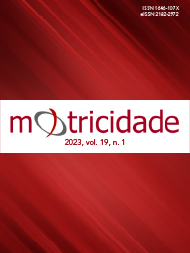What pacing is used by the best swimmers in the 200m freestyle?
DOI:
https://doi.org/10.6063/motricidade.27905Keywords:
Pacing, Swimming, PerformanceAbstract
We examine the pacing strategies of elite swimmers of the 200m freestyle from six long courses World Championships and three editions of the Olympic Games. The entries, partials, and total race times of the finalist swimmers were analyzed. The results showed that the 1st lap is the one with the most significant difference, both for males (0.0008) and females (<0.0001), justified by the push-off against a solid (block). In addition, athletes perform their strategies assuming a negative correlation in the 1st half of the race and a positive correlation in the 2nd half. Also, the winner´s time difference percentage was below compared with the median of total race time, where the Transition a (difference between 1st to 2nd and 3rd places, and the difference of 3rd place to other athletes) is faster in the 2nd half of the race by +3.23% for men and +2.50% for women. It is concluded that the 1st lap presents better reciprocity to the final time. The winners are faster than the median in the 2nd half of the race. Still, the % Time becomes an option, related to the possibility of using the pacing of different athletes, as an option for coaches and athletes.
Downloads
Published
Issue
Section
License
The authors of submitted manuscripts must transfer the full copyright to Journal Motricidade / Sílabas Didáticas Editions. Granting copyright permission allows the publication and dissemination of the article in printed or electronic formats, and copyrights start at the moment the manuscript is accepted for publication. It also allows Journal Motricidade to use and commercialise the article in terms of licensing, lending or selling its content to indexation/abstracts databases and other entities.
According to the terms of the Creative Commons licence, authors may reproduce a reasonable number of copies for personal or professional purposes, but without any economic gain. SHERPA/RoMEO allows authors to post a final digital copy (post-printing version) of the article on their websites or on their institutions' scientific repository.


